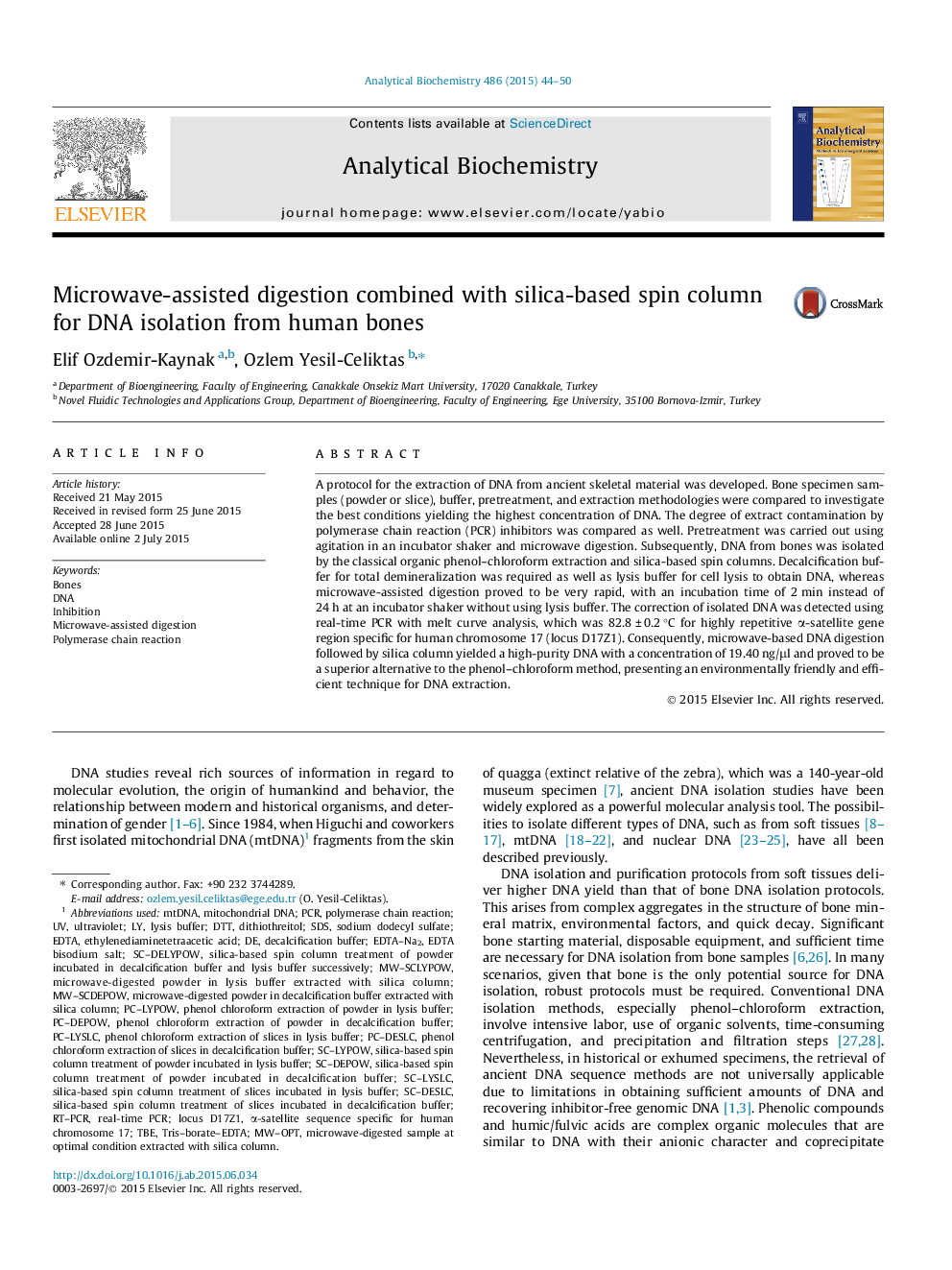| Article ID | Journal | Published Year | Pages | File Type |
|---|---|---|---|---|
| 1173174 | Analytical Biochemistry | 2015 | 7 Pages |
A protocol for the extraction of DNA from ancient skeletal material was developed. Bone specimen samples (powder or slice), buffer, pretreatment, and extraction methodologies were compared to investigate the best conditions yielding the highest concentration of DNA. The degree of extract contamination by polymerase chain reaction (PCR) inhibitors was compared as well. Pretreatment was carried out using agitation in an incubator shaker and microwave digestion. Subsequently, DNA from bones was isolated by the classical organic phenol–chloroform extraction and silica-based spin columns. Decalcification buffer for total demineralization was required as well as lysis buffer for cell lysis to obtain DNA, whereas microwave-assisted digestion proved to be very rapid, with an incubation time of 2 min instead of 24 h at an incubator shaker without using lysis buffer. The correction of isolated DNA was detected using real-time PCR with melt curve analysis, which was 82.8 ± 0.2 °C for highly repetitive α-satellite gene region specific for human chromosome 17 (locus D17Z1). Consequently, microwave-based DNA digestion followed by silica column yielded a high-purity DNA with a concentration of 19.40 ng/μl and proved to be a superior alternative to the phenol–chloroform method, presenting an environmentally friendly and efficient technique for DNA extraction.
